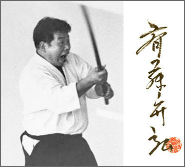To benefit and enjoy training in Aikido, to create an atmosphere of mutual respect among the students and teachers, and for reasons of safety, there are certain rules of etiquette that are followed in each dojo. Some dojos/clubs have much stricter rules than others, each teacher has been trained by differing Masters/teachers, dependant on how harsh or not their training, will determine the individual rules demanded of each student, I recommend you search a few clubs, if possible to see what fits your personality best, before walking away or committing fully to the first one you arrive at, Aikido should eventually become a way of life, not just a casual hobby, you will have the chance to chose once immersed how much time can be given to the art, after all doing any martial art is not normally taken on in a whim, or should not be if your intension is to be one of the best that can be, in life and fitness. Aikido will reward your every desire if you put in the time, it will show just how not only learning a martial art develops the whole mind and body, the Wellbeing, how it goes far beyond what most sports can ever achieve.
Upon entering the dojo for the first time a seated bow should be performed and on leaving the dojo students should do a standing bow towards the shomen. This is where normally a picture of O-Sensei, the founder is placed.
Bow towards the shomen when stepping on or off the mat.
The class is started and finished with a formal bow towards the shomen and the Sensei.
Be on time for class, preferably early but if late bow in alone, after receiving permission to enter the tatami. The teacher will normally spot you at the edge and give instructions for you to come on to the mat, Tatami.
From the time you start training in the art of Aikido, the instructor will be known to you as Sensei at all times, unless they state differently. Many modern teachers are now allowing to be called by their Christian name ie Tony. This is down to the individual to let you know or a chosen senior student is normally there to help new interns to make their entry as smooth and pleasant as possible, never worry that it will be too harsh or something you cannot take on, it’s just very new to what we are normally used to. A martial artist is a human who has honed themselves over years to become attuned to detail and awareness that will stay with them all their lives, improving every part of each day from that point on and will be a very worthwhile journey that many never experience.
Those who have lived will look back and smile, those who thought but never travelled the journey, look back, and wished they had done more.
Before and after training with partners they should be thanked with a bow, the same also when the Sensei provides personal instruction.
For your safety and those you train with it is of paramount importance to remove all jewellery and piercings before training.
Keep toenails and fingernails clean and short.
Always keep the body and Gi clean.
If a student is cut they should leave the mat and dress the wound before resuming training. Ensure feet are clean before stepping onto the mat.
Students thought to be under the influence of alcohol or drugs will not be permitted to train. The use of bad language is not permitted in the dojo.
Aikido is more than just a physical form of self-defense. It is a physical, mental, and spiritual path for growth and development: therefore the greatest understanding is gained when each action is done with mind, body, and spirit.
Bowing is a form of politeness in Aikido, O Sensei, the dojo, Sensei, and training partners, it is the spirit in which it is done which gives it value and meaning. A bow done out of habit is simply a hollow shell. The western world shakes hands, the Japanese bow, it’s as simple as that.


